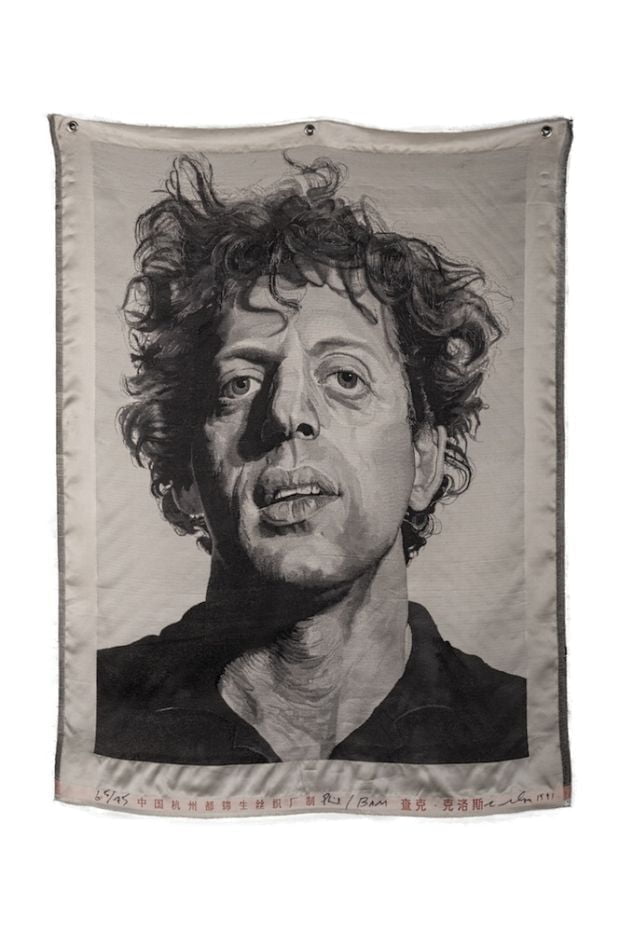A toast is in order.
Heading into its third decade, the Frederick R. Weisman Museum of Art on Pepperdine campus is celebrating an extraordinary, recent donation of contemporary art from television producers Eric and Peggy Lieber with a stunning exhibit. “Celebrating Two Decades: The Peggy and Eric Lieber Collection and Other Gifts,” runs through August 4 and Malibu is the richer for it.
The Liebers, producers of long-lived talk shows like “The Dick Cavett Show” and “The Mike Douglas Show,” as well as “The Love Connection” and television specials featuring artists like Barbra Streisand and Tony Bennett, have been gifting the Weisman since 2001. The gifts feature work from some of the more notable artists of the 20th century.
When Peggy Lieber died last year (Eric passed in 2008), a trove of another 30 works came to the Weisman, building a collection that highlights important California artists like David Hockney and Ed Kienholz.
A visit to the Weisman exhibit is like a stroll through modern contemporary art history: the advent of Abstract Expressionism to the then socially challenging concept of Pop Art.
When Andy Warhol first painted his rows of Campbell Soup cans, more than one viewer echoed the meme: “But is it Art?” The Weisman’s example of late-career Warhol, a 1984 silkscreen titled “The Only Way Out Is In,” displays a deeply religious side to Warhol (apparently, he attended Eastern Orthodox mass daily), with an image of Jesus meditating like Buddha under the Universal Eye. Faith as pop culture.
One of the first pieces to greet visitors is a piece by assemblage artist Ed Kienholz (and Nancy Reddin Keinholz), titled “Carmen (from the ‘Merry Go World’ series).” Keinholz was famous for setting up large installations using cast human figures and everyday objects to satirize or criticize the absurdity of the human condition. In the Weisman piece, an assemblage of ordinary kitchen objects—a salt shaker, a scrap of chain link fence—is arranged over a photo of a poor child, throwing a spotlight on the plight of poverty-stricken kids in America.
The expanded collection adds notable heft to the Weisman’s holdings. Apparently, Eric Lieber studied art before launching a career in television and his eye was exceptionally honed.
“This donation adds significant depth to our holdings of contemporary art,” museum curator Michael Zakian said in a statement. “Eric Lieber… was always drawn to works that reveal the artist’s creative process. This interest in unconventional methods and materials shaped the works he collected.”
Some of the materials used in the different pieces are unconventional for the particular artist. One on view is Chuck Close’s famous portrait of composer Philip Glass, titled “Phil (BAM).” Close is known for his paintings of people taken from extreme close-up shots, with detail so fine that viewers question whether it is a photograph or not. This portrait of Glass is presented as a woven silk tapestry.
Many of the works portray a sense of social disconnection the artist sees growing in American society. The late artist Mike Kelley used a lot of found objects to create his assemblages; old rag dolls, chess pieces, broken toys and thrift shop knick-knacks would combine to become Kelley’s commentary on empathy (or lack of it) and the human condition.
In “Empathy Displacement: Humanoid Morphology,” he uses a rag doll encased in a black box on the ground to emphasize the liveliness of a painting of the same object just above it.
California artist Llyn Foulkes is well represented with a couple of works, including one piece, a 1963 oil on canvas titled “Greetings from Hogback Mountain.” Part of Foulkes’ “postcard series,” the large painting depicts a barren wasteland in muted gray-green, far from the sunny images one would expect to see in a postcard. Per the museum catalogue, the piece is meant as “a critique of the consumer ethos of corporate America which focuses on shallow experience.” Not all art is meant to bring forth smiles.
With many other sculptures, paintings and assemblages, the Weisman show is a treasure trove for the contemporary art lover. Though the Lieber donation is now part of the Weisman’s permanent collection, it is a treat to see the entire group assembled in one show. See it while you can.
For more information on the Frederick R. Weisman museum exhibit, visit the website arts.pepperdine.edu/museum/2012-2013/ permanent-collection.htm




